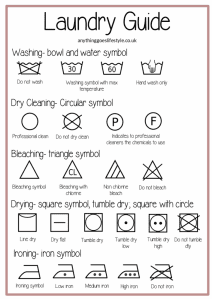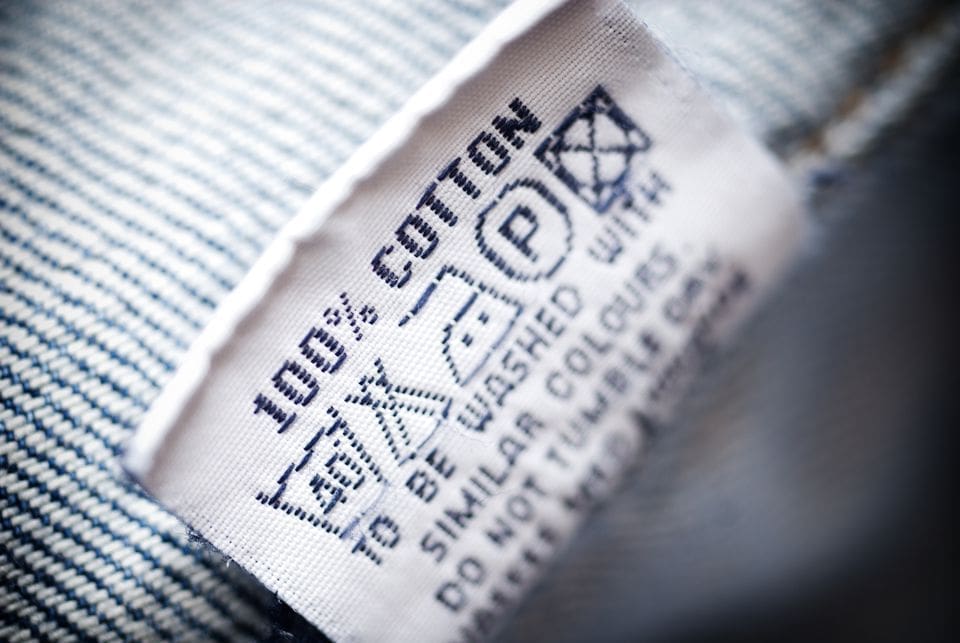Different fabrics in your wardrobe require varied care – lumping everything together will ultimately result in heartbreak when you take clothes out of the dryer, only to find that your jumper’s shrunk two sizes and your beautiful white sundress is now a dreadful shade of bubblegum pink.
Although it’s tempting to take shortcuts when it comes to laundry – it’s hardly the most enjoyable household task – taking the time to do it right is worth the effort. After all, your wardrobe represents a huge investment of time, effort and creativity. Don’t let carelessness cost you a fortune – follow the basic rules of laundering to get perfectly clean, vibrant clothing after every wash.
Linen:

- Never wash linen clothing at a temperature of more than 60 degrees Celsius – by doing so, you risk causing premature wear.
- Separate colors from light, white linens. Dyes can easily bleed through and ruin pure white linen.
- Use non-bleach stain remover prior to laundering. Bleach will weaken fibers in the fabric and ruin dyed clothes.
- Try to remove stains immediately, if possible. (This rule applies to most fabrics.)
- Wash table linens and towels separately, otherwise clothes will come out covered in lint.
- When washing linen clothing, fill your machine only halfway. This fabric needs a little more water than others to get clean.
- Always hang your linens out to dry. Tumble drying them will cause creases and shrinkage.
- How to wash: Dry-clean or hand-wash in cold with mild detergent. Air-dry.
- Tip: Or machine-wash on gentle.
Silk:

- Hand wash silk clothing, using a gentle soap.
- Hang it out to dry.
- Never iron silk clothing – it will burn the fabric.
- How to wash: Dry-clean or hand-wash in cold with mild detergent. Air-dry.
- Tip: Test for colorfastness (dip a cotton swab in detergent and hold it on an inconspicuous area for two minutes to see if the color bleeds).
Wool:

- Avoid frequent washes, as this will shorten the life of your wool clothing and wear the fabric out prematurely. Wool is an especially delicate fabric, so treat it with care.
- Soak wool in cold water prior to washing in soapy water. This will help prevent shrinkage.
- When washing is absolutely necessary, use a delicate setting with cold or lukewarm water.
- If possible, it’s best to hand wash wool items. Always dry it naturally – tumble drying will ruin your clothes.
- Use specially-made wool detergent to get the fabric clean and fresh.
- How to wash: Dry-clean or hand-wash in cold with mild detergent. Air-dry.
- Tip: Use cedar hangers to repel moths.
Cashmere:

- Take great care when washing cashmere, as it’s quite delicate and can be easily damaged. To protect your items, gently place them inside a pillowcase or special bag prior to starting the washing cycle. This will prevent rapid rotation inside your washer from agitating the fabric.
- Use a wool-washing detergent or gentle, diluted soap to clean cashmere items.
- Avoid tumble drying at all costs. Instead, lay cashmere out on flat towels to air dry.
Pashmina:

- Treat Pashmina just as you would cashmere – very gently.
- Never wash it in a washing machine or in hot water. …
- Never wring it or twist it to remove water. …
- Never iron it directly. …
- Never hang it to dry in direct sunlight. …
- Store the Pashmina shawls folded or rolled in the cupboard shelf wrapped in a muslin cloth.
Cotton:

- Since cotton is quite durable, you can relax knowing the washing machine won’t cause any adverse effects. Wash cotton clothing in warm (not hot) water, using color-safe detergent.
- To keep cotton towels fluffy and soft to the touch, use half the recommended amount of detergent, and give them an extra rinse at the end of the cycle.
- Tumble dry low or dry naturally to prevent shrinking.
- Synthetic fabrics (rayon, nylon, acrylics, spandex, and polyester):
- Synthetic fabrics are also easy to maintain – just turn them inside-out, pop them in the wash and use regular detergent.
- Tumble dry low, just as you would with cotton.
- For nylon clothing, you might want to consider using fabric softener to prevent static electricity.
- How to wash: Machine-wash in cold or warm with all-purpose detergent.
- Tip: Sun yellows it; line-dry in shade.
Rayon:

- Created from wood pulp treated with chemicals, cool and comfortable rayon is considered a semi synthetic fabric. When laundered, it may bleed, shrink, or lose its crispness.
- How to wash: Dry-clean or hand-wash in cold with mild detergent. Air-dry.
- Tip: Iron it when slightly damp.
Synthetics:

- Polyester, nylon, spandex, acrylic, and acetate won’t shrink and will resist water-based stains. Most produce static and may permanently wrinkle in a hot dryer, so dry on low.
- How to wash: Machine-wash in warm with all-purpose detergent.
- Tip: Use fabric softener to curb static.
Spandex:
- Hand Wash — Air Dry
- A touch of stretch makes clothing fit and feel better. Enter spandex, an elastic fiber now incorporated in small amounts in many types of fabric to add stretch and comfort. While spandex is hand- or machine-washable, avoid hot water and chlorine bleach. Both will damage the spandex fibers. Unless care labels provide otherwise, hang spandex garments to dry, and avoid machine drying.
- The heat of the dryer can cause some spandex-blends to pucker or bubble. If ironing is necessary, press the item quickly with a warm iron
Separate clothing:
Finally, once you’ve sorted clothes based on fabric type, separate delicate like underwear from other items, and colors from whites. Invest time and attention into both the sorting and washing processes, as they will help extend the life of your clothing.


